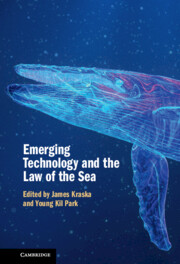7 results
Chapter 6 - Asymmetries and Rivalry
- from Part III - The Evolution of the Rivalry
-
- Book:
- The Sino-Indian Rivalry
- Published online:
- 15 June 2023
- Print publication:
- 29 June 2023, pp 123-154
-
- Chapter
- Export citation

Emerging Technology and the Law of the Sea
-
- Published online:
- 07 July 2022
- Print publication:
- 21 July 2022
6 - Musicians and Naval Ambitions
-
- Book:
- The Madagascar Youths
- Published online:
- 16 June 2022
- Print publication:
- 30 June 2022, pp 177-203
-
- Chapter
- Export citation
4 - The Collapse of Consensus and Control, 1910–1914
-
- Book:
- The Quest for Security
- Published online:
- 28 October 2019
- Print publication:
- 31 October 2019, pp 150-190
-
- Chapter
- Export citation
The Phantom Airship Panic of 1913: Imagining Aerial Warfare in Britain before the Great War
-
- Journal:
- Journal of British Studies / Volume 55 / Issue 1 / January 2016
- Published online by Cambridge University Press:
- 04 January 2016, pp. 99-119
-
- Article
- Export citation
Underwater and Hyperbaric Naval Medicine (Historical Perspective and Actual Situation)
-
- Journal:
- Prehospital and Disaster Medicine / Volume 25 / Issue S2 / October 2010
- Published online by Cambridge University Press:
- 17 February 2017, p. s103
- Print publication:
- October 2010
-
- Article
-
- You have access
- Export citation
Modélisation du comportement au feu d'un composite par calcul de pyrolyse : approche combinée expérience-simulation à petite échelle
-
- Journal:
- Mechanics & Industry / Volume 10 / Issue 3-4 / May 2009
- Published online by Cambridge University Press:
- 05 August 2009, pp. 245-253
- Print publication:
- May 2009
-
- Article
- Export citation

